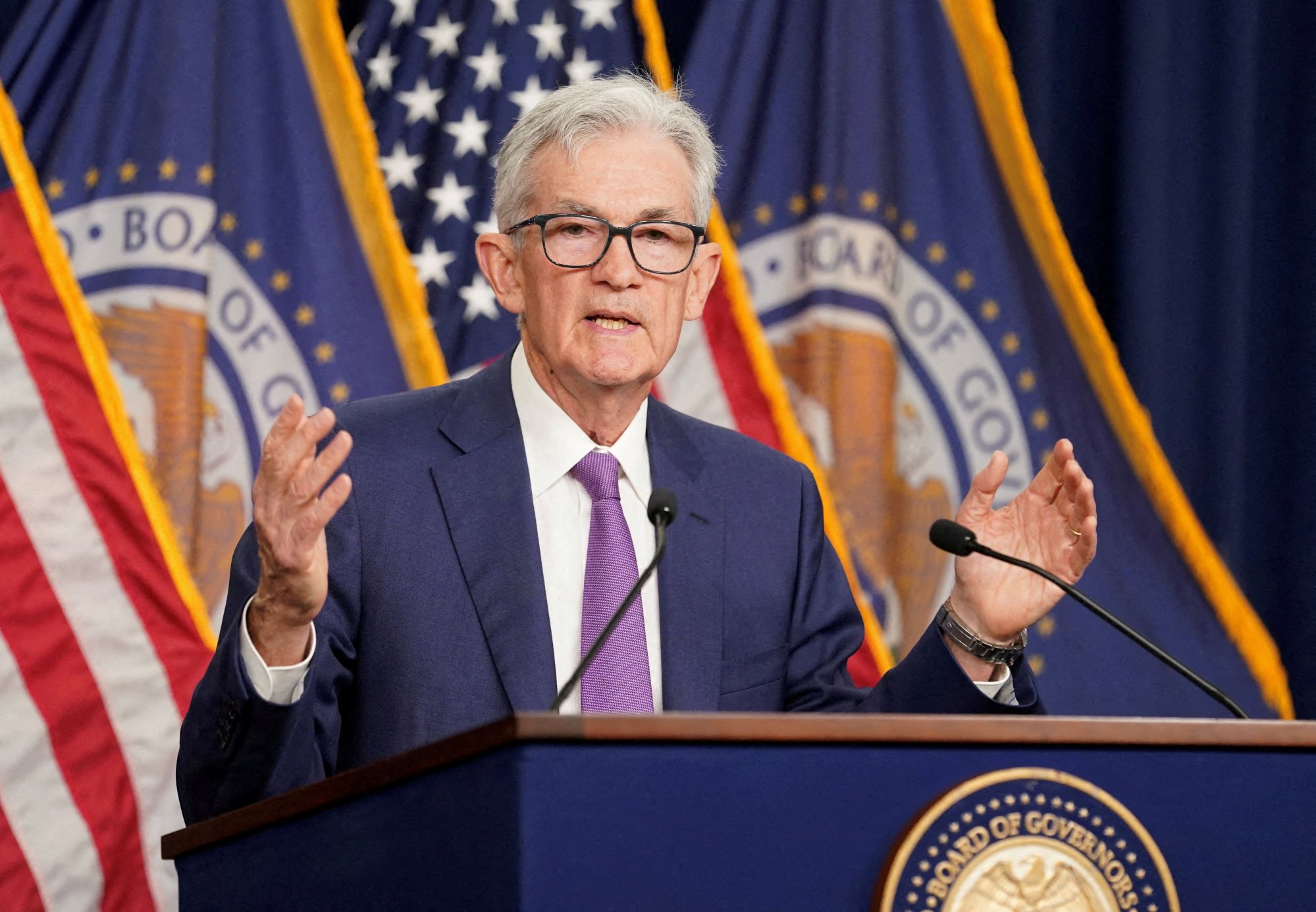
Hong Kong keeps rate steady for seventh time as traders shift hope of cuts to later this year
- The city’s base rate remains at 5.75 per cent after the US Fed kept its target rate unchanged
“The most recent inflation readings have been more favourable than earlier in the year, and there has been modest further progress toward our inflation objective,” Fed Chairman Jerome Powell said after a two-day meeting. “We’ll need to see more good data to bolster our confidence that inflation is moving sustainably toward 2 per cent.”
The Fed’s policymakers signalled just one rate cut this year, pencilling in four reductions in 2025. That did little to douse the fervour in the stock market, as the S&P500 index surged past 5,400 points for the first time. The benchmark ended the day at 5,421.03, a gain of 0.85 per cent.

“The Fed could still move two times this year if inflation figures continue to soften,” Kerry Craig, global market strategist at JP Morgan Asset Management, said in a research note after the Fed decision. “The markets should take away the impression of a central bank that is still on a policy easing path, even if it is coming later.”
Bank of China (Hong Kong), HSBC and its subsidiary Hang Seng Bank kept their prime lending rate at 5.875 per cent, while paying 0.875 per cent per annum for savings deposits over HK$5,000 (US$640) and nothing to those below that, the three banks said in separate statements on Thursday.
DBS Hong Kong kept its prime rate unchanged at 6 per cent and its savings deposit rate at 0.23 per cent to 0.75 per cent, depending on the amount. Standard Chartered and Citibank kept their lending rates at 6.125 per cent.
The HKMA has followed the Fed’s monetary policy in lockstep since 1983 under its linked exchange rate system to preserve the local currency’s peg to the US dollar.
The HKMA and the Fed have kept their key lending rates at the current level since last summer, when they last raised them by 25 basis points. They increased their rates 11 times between March 2022 and July 2023, taking them to the highest level since December 2007.
Core US inflation rose 3.6 per cent in April, slightly lower than the 3.8 per cent in March but still well above the Fed’s target of 2 per cent.
The Fed’s decision was widely expected, as 99.4 per cent of traders predicted the US central bank would leave the interest rate unchanged after its policy meeting, according to data compiled by CME Group based on Fed fund futures contracts on Tuesday.
More than 90 per cent of the traders expect the Fed to keep the rate unchanged again in July, while just under half forecast a 25 basis-point cut in September.
The city’s lenders raised their prime rates five times from September 2022 to July 2023 by a total of 87.5 basis points to the highest level since 2007.
The one-month Hibor, or Hong Kong interbank offered rate, weakened to 4.5098 per cent on Tuesday from 4.9853 per cent at the start of the year. The three-month Hibor fell to 4.7323 per cent from 5.0716 per cent over the same period, according to data published by the Hong Kong Association of Banks.
While the HKMA must change the official base rate with any change by the Fed, Hong Kong’s commercial banks can decide when to change their own prime rates. Usually they do not change the rate immediately when the US does, rather waiting a few months for the rate cut to impact the interbank rate in Hong Kong.
Hong Kong’s banks did not replicate every rate hike carried out by the US in the last cycle, so they have no urgent need to cut rates, according to Tommy Ong, managing director of T.O. & Associates Consultancy.
“The Fed Fund rate has to be cut for Hong Kong banks to engineer a prime rate cut that may only be half the magnitude of the Fed fund rate cut,” he said. “If the US cuts the rate by 25 basis points in September, Hong Kong banks may cut their prime rate by 12.5 basis points.”
The first rate cut by Hong Kong banks might come in the first half of 2025, according to Ryan Lam Chun-wang, Hong Kong head of research at Shanghai Commercial Bank.
“The rate cut will be helpful in lifting some pressure from rate-sensitive sectors, such as property and small and medium-sized enterprises,” he said.

